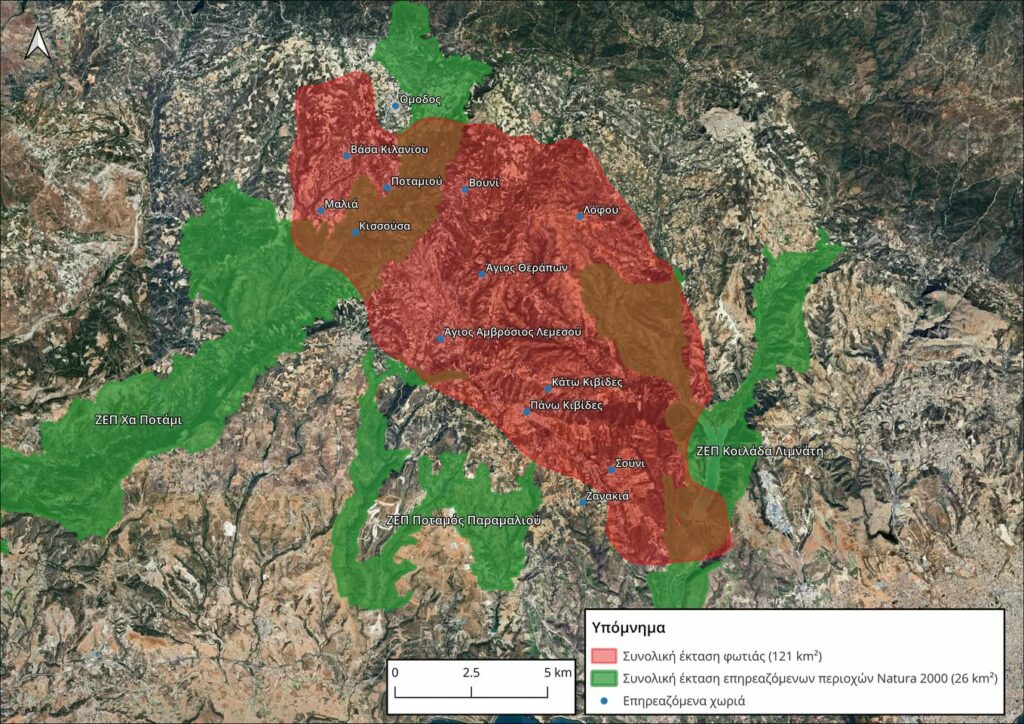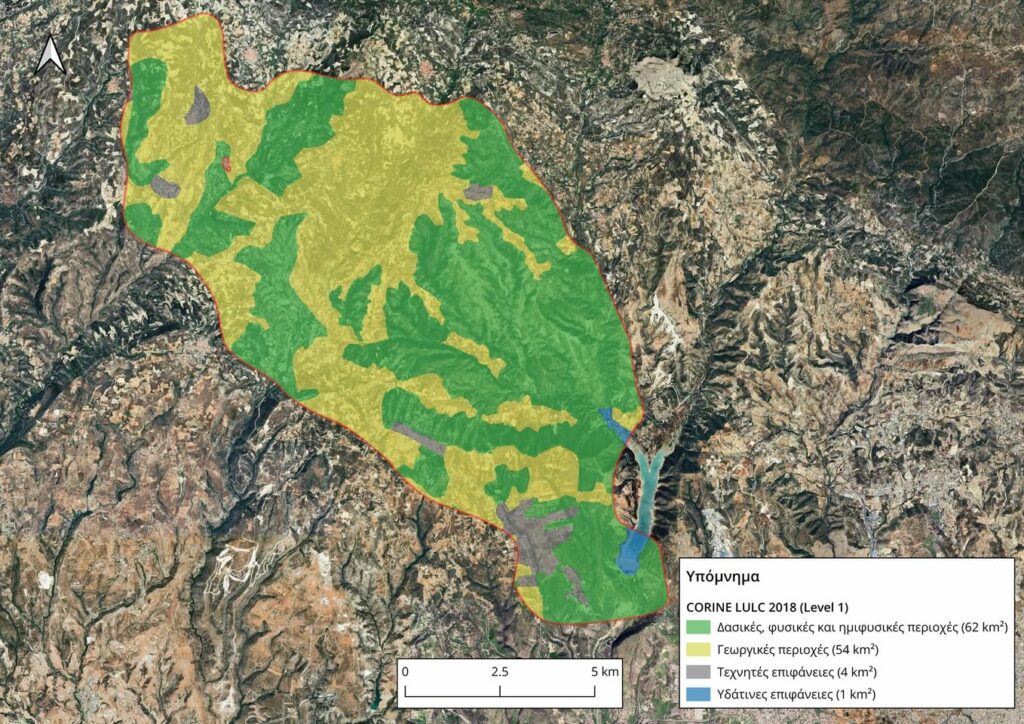Filenews 31 July 2025
Landscapes and habitats of great ecological importance were burned by the huge fire in the Limassol district, affecting a total of three protected areas of the Natura 2000 Network, according to an announcement by BirdLife Cyprus.
The affected areas are: Limnatis Valley, Ha Potami and Paramali River.
Burned area (% of the total Special Protection Zone – SPA):
• Limnatis Valley: 46.7% (13.5 km²)
• Ha Potami: 15.5% (12.4 km²)
• Paramali River: 1.7% (0.3 km²)
"These areas are home to important habitat types, birds of prey (Eagle Hawk, Spotted Eagle, Vulture) and endemic species (Skalifourta, Trypomazis) – which use the areas for nesting and foraging. The value of these areas for biodiversity and the provision of ecosystem services is invaluable. And yet, they remain vulnerable, even under protection," he points out.
Based on analysis*, by land use, the fire burned:
• 62 km² of forest, natural and semi-natural areas
• 54 km² of agricultural land
• 4 km² of artificial surface
• 1 km² of body of water


The natural regeneration of scorched earth will be uncertain as the climate crisis intensifies prolonged drought and extreme weather events, he said. "The scientific community has been warning about climate change for years, while the State is informed, and has legal commitments to take mitigation and adaptation measures. And yet, the State still lacks a modern, long-term plan for the prevention and management of fires."
He also adds that fire prevention and response requires a holistic and coordinated approach. What is missing is the political will to implement. For years, BirdLife Cyprus has been putting forward clear and documented positions on the need for a modern prevention and action planning, including:
• Landscape management and enhancement of agriculture and livestock farming in the countryside, with a mosaic of uses that reduces the risk of fire spreading
• Resilient forest ecosystems, with a variety of species, not monocultures such as pine forests
• Regulations for individual dwellings and prohibition of practices such as burning
• Training, volunteers, early intervention plans
• Response: in addition to being adequately equipped with ground firefighting forces, there must be high-capacity aircraft for immediate extinguishing and effective firefighting before they spread
• Natural regeneration where possible, with minimal mechanical interventions
• Dissuasive penalties and, most importantly, their application in practice
This disaster must finally be turned into a starting point for serious change to avoid the loss of human lives, property and nature of inestimable value.
*LULC analysis based on CORINE 2018 LEVEL 1
